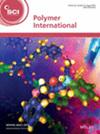Zahrah Faraj Omar Hunaydi, Noor Ayuni Ahmad Shafiai, Siti Noor Fazliah Mohd Noor, Zuratul Ain Abdul Hamid, Nawal Radhiah Abdul Rahman
求助PDF
{"title":"不同比例的新型miswak和生物活性玻璃复合材料的表征","authors":"Zahrah Faraj Omar Hunaydi, Noor Ayuni Ahmad Shafiai, Siti Noor Fazliah Mohd Noor, Zuratul Ain Abdul Hamid, Nawal Radhiah Abdul Rahman","doi":"10.1002/pi.6758","DOIUrl":null,"url":null,"abstract":"<p>The present study aims to formulate and characterize novel composite materials consisting of miswak (<i>Salvadora persica</i>) and bioactive glass (45S5 and 54S4P) in different ratios (25%–75%, 50%–50% and 75%–25%). Miswak sticks were dried, ground into a fine powder and blended with bioactive glass powder obtained through a melt-derived technique at 1400 °C. The resulting composites, designated M25BG45, M50BG45, M75BG45, M25BG54, M50BG54 and M75BG54, were compacted into pellets 1 mm thick weighing approximately 150 mg using a manual hydraulic press and then sintered at 200 °C. Comprehensive characterization was conducted using gas chromatography–mass spectrometry, field emission SEM (FESEM), XRD, X-ray fluorescence spectroscopy and Fourier transform infrared (FTIR) spectroscopy. FESEM showed a homogeneous distribution of miswak particles within the bioactive glass matrix. XRD confirmed the amorphous nature of the bioactive glass and the distinctive peaks of miswak. FTIR spectra revealed absorption bands corresponding to both miswak and bioactive glass. The structural assessment of these composites, incorporating varying proportions of miswak with bioactive glass types 45S5 and 54S4P, provides valuable contributions towards optimizing bioactivity and biocompatibility. These findings suggest potential applications of the innovative miswak–bioactive glass composite in oral and dental healthcare. © 2025 Society of Chemical Industry.</p>","PeriodicalId":20404,"journal":{"name":"Polymer International","volume":"74 8","pages":"676-687"},"PeriodicalIF":3.6000,"publicationDate":"2025-03-24","publicationTypes":"Journal Article","fieldsOfStudy":null,"isOpenAccess":false,"openAccessPdf":"","citationCount":"0","resultStr":"{\"title\":\"Characterization of novel miswak and bioactive glass composites in various ratios\",\"authors\":\"Zahrah Faraj Omar Hunaydi, Noor Ayuni Ahmad Shafiai, Siti Noor Fazliah Mohd Noor, Zuratul Ain Abdul Hamid, Nawal Radhiah Abdul Rahman\",\"doi\":\"10.1002/pi.6758\",\"DOIUrl\":null,\"url\":null,\"abstract\":\"<p>The present study aims to formulate and characterize novel composite materials consisting of miswak (<i>Salvadora persica</i>) and bioactive glass (45S5 and 54S4P) in different ratios (25%–75%, 50%–50% and 75%–25%). Miswak sticks were dried, ground into a fine powder and blended with bioactive glass powder obtained through a melt-derived technique at 1400 °C. The resulting composites, designated M25BG45, M50BG45, M75BG45, M25BG54, M50BG54 and M75BG54, were compacted into pellets 1 mm thick weighing approximately 150 mg using a manual hydraulic press and then sintered at 200 °C. Comprehensive characterization was conducted using gas chromatography–mass spectrometry, field emission SEM (FESEM), XRD, X-ray fluorescence spectroscopy and Fourier transform infrared (FTIR) spectroscopy. FESEM showed a homogeneous distribution of miswak particles within the bioactive glass matrix. XRD confirmed the amorphous nature of the bioactive glass and the distinctive peaks of miswak. FTIR spectra revealed absorption bands corresponding to both miswak and bioactive glass. The structural assessment of these composites, incorporating varying proportions of miswak with bioactive glass types 45S5 and 54S4P, provides valuable contributions towards optimizing bioactivity and biocompatibility. These findings suggest potential applications of the innovative miswak–bioactive glass composite in oral and dental healthcare. © 2025 Society of Chemical Industry.</p>\",\"PeriodicalId\":20404,\"journal\":{\"name\":\"Polymer International\",\"volume\":\"74 8\",\"pages\":\"676-687\"},\"PeriodicalIF\":3.6000,\"publicationDate\":\"2025-03-24\",\"publicationTypes\":\"Journal Article\",\"fieldsOfStudy\":null,\"isOpenAccess\":false,\"openAccessPdf\":\"\",\"citationCount\":\"0\",\"resultStr\":null,\"platform\":\"Semanticscholar\",\"paperid\":null,\"PeriodicalName\":\"Polymer International\",\"FirstCategoryId\":\"92\",\"ListUrlMain\":\"https://scijournals.onlinelibrary.wiley.com/doi/10.1002/pi.6758\",\"RegionNum\":4,\"RegionCategory\":\"化学\",\"ArticlePicture\":[],\"TitleCN\":null,\"AbstractTextCN\":null,\"PMCID\":null,\"EPubDate\":\"\",\"PubModel\":\"\",\"JCR\":\"Q2\",\"JCRName\":\"POLYMER SCIENCE\",\"Score\":null,\"Total\":0}","platform":"Semanticscholar","paperid":null,"PeriodicalName":"Polymer International","FirstCategoryId":"92","ListUrlMain":"https://scijournals.onlinelibrary.wiley.com/doi/10.1002/pi.6758","RegionNum":4,"RegionCategory":"化学","ArticlePicture":[],"TitleCN":null,"AbstractTextCN":null,"PMCID":null,"EPubDate":"","PubModel":"","JCR":"Q2","JCRName":"POLYMER SCIENCE","Score":null,"Total":0}
引用次数: 0
引用
批量引用





 求助内容:
求助内容: 应助结果提醒方式:
应助结果提醒方式:


